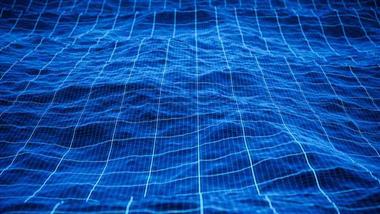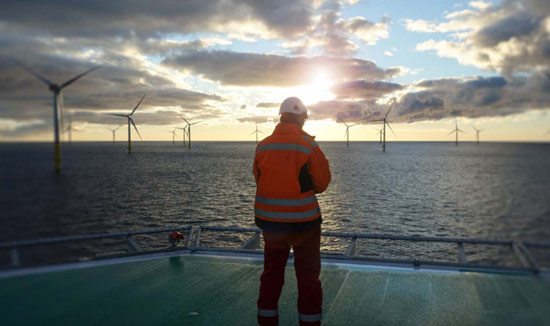New Threat to Life: The Internet of Underwater Things

STORY-AT-A-GLANCE
- The Internet of Underwater Things is an invasive and dangerous initiative that has been quietly unfolding for a number of years
- Development of “smart oceans” is a part of the overall agenda of financialization of nature
- The initiative requires introduction of a wide range of invasive technologies into the ocean on a massive scale (including potentially 6G)
- The Internet of Underwater Things involves device communication using acoustic waves, which can drastically interfere with marine life as inhabitants of the ocean rely on acoustic signals for basic everyday functions
- Among the interested parties are World Economic Forum and DARPA
This story is about a crazy and dangerous project that is being carried out behinds the scenes — with a potential to impact all life on Earth. The monster is called the Internet of Underwater Things, and the objective of the initiative is to fully invade and disrupt the oceans in the name of, what else, lucrative “sustainable development,” plus military gains.
In a 2012 paper, the Internet of Underwater Things is defined as a “world-wide network of smart interconnected underwater objects that enables to monitor vast unexplored water areas.”
This project is an easy candidate for the Darwin Awards. It includes such obviously bad ideas as introducing underwater devices that communicate long-distance through impactful acoustic waves — deafening marine life — as well as installing nodes and devices at the ocean floor, scattering numerous underwater vehicles and robots all over the oceans, creating electromagnetic interferences, and much more.
Personally, I am stunned by the cruelty and the undeniable stupidity of this undertaking. I wonder if the concept would have receive even one upvote if the scientists (or the investors) had to first try it out on themselves by installing loudspeakers in their houses that would blast deafening sounds at random hours, accompanied by camera-enabled drones that just would (loudly) fly in and out, as the scientists tried to live their private lives.
My theory is that after a month or two of such life, the scientists would scream for mommy and complain to heavens about injustice. But somehow, an assault on marine life on an unprecedented scale is just fine — and even prestigious! Alas, respect for life is not taught to the scientists.
Early Research in the EU
Here is a neat little primer from 2014 from the Sunrise Project, an early EU imitative dedicated to the IoUT:
“Under water, we have to use the same communication method used by marine creatures, namely, sounds, or acoustic communications,” says Prof Chiara Petrioli, Sunrise project coordinator, University of Rome. (The system they are touting in the video is appropriately called “LOON.”)
This 2018 article on the International Defense, Security and Technology website, talks about the SUNRISE project in detail:
“The Objective of European SUNRISE initiative is to provide the missing tools for an unprecedented monitoring and exploration of marine environments, by extending the concept of Internet of Things to marine environments. IoUT promise oil and gas exploration [speaking of sustainability], monitoring of waterways and marine environments, producing renewable energy through offshore wind turbines and sustainable use ocean’s resources.
Analogous to IoT, Military internet of things (MIOT) comprising multitude of platforms, ranging from ships to aircraft to ground vehicles to weapon systems, is expected to be developed. Military is also interested in building Military Internet of Underwater Things (IoUT) to communicate with Underwater Vehicles, ships and submarines.
A highly valued, long sought but has been non-cabled, distributed, networked undersea surveillance and weapon systems. The Defense Advanced Research Projects Agency [DARPA] has issued a solicitation identifying technology breakthroughs that will enable fully integrated and networked undersea systems.”
DARPA’s “Ocean of Things”
Speaking of DARPA: According to Forbes, they were “awarded a contract for the next phase of development of its Ocean of Things (OoT), a project to seed the seas with thousands of floating sensors, monitoring everything that passes from aircraft to submarines.”
In their own words, “DARPA’s Oceans of Things program seeks to enable persistent maritime situational awareness over large ocean areas by deploying thousands of small, low-cost floats that form a distributed sensor network.
Each smart float contains a suite of commercially available sensors to collect environmental data-such as sea surface temperature, sea state, and location — as well as activity data about commercial vessels, aircraft, and even maritime mammals moving through the area. The floats transmit data periodically via satellite to a cloud network for storage and real-time analysis.”
SEANet Project
A littler earlier, in 2018, the SEANet project was introduced to the public in the United States, funded by US National Science foundation, to “develop an open platform for flexible experimentation with underwater networked systems.”
6G
The Internet of the Underwater Things comes with advanced technical specifications. In 2020, a paper titled, “Underwater Internet of Things in Smart Ocean: System Architecture and Open Issues” described the development of “smart oceans” as a project requiring “the most recent developments in autonomous underwater vehicles, smart sensors, underwater communication technologies, and underwater routing protocols.”
In 2021, another paper, elaborately titled, “Federated Meta Learning Enhanced Acoustic Radio Cooperative Framework for Ocean of Things Underwater Acoustic Communications,” stated the following:
“Sixth-generation wireless communication (6G) will be an integrated architecture of ‘space, air, ground and sea’. One of the most difficult part of this architecture is the underwater information acquisition which need to transmit information cross the interface between water and air.
In this scenario, ocean of things (OoT) will play an important role, because it can serve as a hub connecting Internet of things (IoT) and Internet of underwater things (IoUT). OoT device not only can collect data through underwater methods, but also can utilize radio frequence over the air.
For underwater communications, underwater acoustic communications (UWA COMMs) is the most effective way for OoT devices to exchange information, but it is always tormented by doppler shift and synchronization errors.”
Given the known effects of wireless radiation, this is devastating.
A Dire Warning From the Author of the “Invisible Rainbow”
Arthur Firstenberg, the pioneering author of the “Invisible Rainbow,” published an alarming, must-read overview of the Internet of Underwater Things.
He believes that “the single most urgent assault, which is destroying the planet the quickest, is wireless technology. It is the most destructive itself, and it speeds up and coordinates all the other assaults.” What are the types of devices required for the Internet of Underwater Things?
| sensors and antennas (“nodes”) on the ocean floor | nodes at different depths |
| surface nodes | relay antennas at different depths to transmit data vertically from the ocean floor to the ocean surface, and horizontally between nodes |
| Autonomous Underwater Vehicles (AUVs) | Autonomous Surface Vehicles (ASVs) |
| underwater robots | wireless surface buoys |
| smart boats and ships | smart submarines |
| smart shores |
According to Arthur Firstenberg, “some of the underwater acoustic modems that are being marketed are capable of producing sound as loud as 202 decibels. That is equivalent to 139 decibels in air. It is as loud as a jet engine at a distance of 100 feet, and is above the threshold for pain in humans.
These modems blast modulated sound at frequencies ranging from 7 kHz to 170 kHz, encompassing almost the entire hearing range of dolphins, which use sound for hunting and navigating.” He also cites a paper on the impact of noise pollution on ocean life:
“Most fish and invertebrates use sound for vital life functions … Noise impacts on development include body malformations, higher egg or immature mortality, developmental delays, delays in metamorphosing and settling, and slower growth rates. Zooplankton suffered high mortality in the presence of noise.
Anatomical impacts from noise involve massive internal injuries, cellular damage to statocysts and neurons, causing disorientation and even death, and hearing loss.
Stress impacts from noise are not uncommon, including higher levels of stress hormones, greater metabolic rate, oxygen uptake, cardiac output, parasites, irritation, distress, and mortality rate, sometimes due to disease and cannibalism; and worse body condition, lower growth, weight, food consumption, immune response, and reproductive rates. DNA integrity was also compromised, as was overall physiology.”
Where is PETA?
The Role of the World Economic Forum
Now let’s see. Given the ambitious nature of the destructive initiative, is the World Economic Forum lurking in the background? Sure it is! Meet C4IR (“Center for the Fourth Industrial Revolution”) Ocean.
According to them, they are “the first and only C4IR affiliate centre with a global ocean mandate [here we go again with mandates], a joint initiative by the Aker Group and the World Economic Forum … These large scale and multifaceted challenges require all ocean stakeholders to work together.” What about their “platform”?
“The Ocean Data Platform is the central tool in C4IR Ocean’s efforts to unlock the power of ocean data. It is designed as a global, open-source, integrated data digital ecosystem built to pilot and support new data-driven tools to enable ocean health and productivity.”
Productivity! Productivity! They view the beautiful ocean, the cradle of life, as an inanimate conveyor pushing out the profits! But of course.
As a tangent, here is a detail about the Aker Group, from Reuters. “Norway’s Aker ASA will create more value from IT and low carbon energy businesses in the next decade than from its traditional oil and gas operations, billionaire investor Kjell Inge Roekke said.” It’s all about sustainability!
The “Ocean Panel”
While we are at it, please also meet the mighty Ocean Panel, “a unique initiative by 14 world leaders who are working with government, business, financial institutions, the science community and civil society to catalyse and scale bold, pragmatic solutions across policy, governance, technology and finance to ultimately develop an action agenda for transitioning to a sustainable ocean economy.” What do they say about themselves? Naturally, they brag about being the good guy:
“By enhancing humanity’s relationship with the ocean, bridging ocean health and wealth, working with diverse stakeholders and harnessing the latest knowledge, the Ocean Panel aims to facilitate a better, more resilient future for people and the planet.
Established in September 2018, the Ocean Panel … is the only ocean policy body made up of serving world leaders with the authority needed to trigger, amplify and accelerate action worldwide for ocean priorities.”
Call me naïve — but to my ears, the repeated use of fuzzy language, accompanied by touching photos of indigenous people, is a little obnoxious. It’s been shown again and again that “sustainable” projects like this tend to displace indigenous people and serve no other purpose than bringing new profits to the old profiteers.
And by the way, in conclusion, here is what “sustainable” treatment of oceans looks like to them, according to their own report. Roaring turbines. On acoustic grounds alone, I would say, fact-check: false.

About the Author
To find more of Tessa Lena’s work, be sure to check out her bio, Tessa Fights Robots.